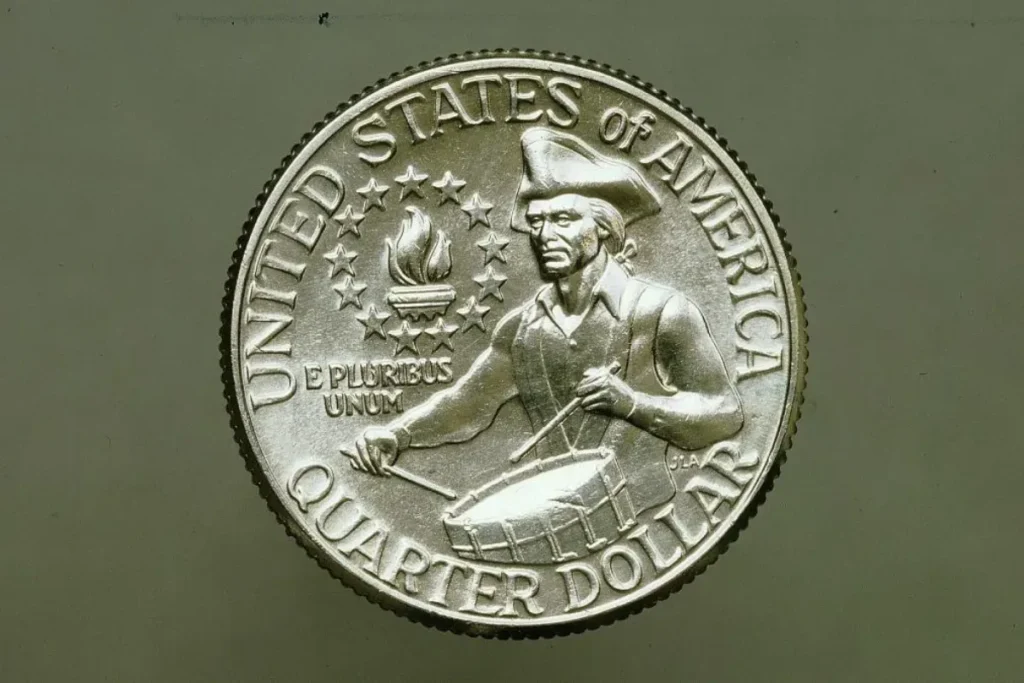The 1976 Bicentennial quarter is a special coin in U.S. history. It celebrates the 200th anniversary of the country’s independence.
While many of these coins were made, one rare type has caught the attention of collectors and is worth a whopping $2 million! In this article, we’ll discover what makes this quarter so valuable and how you can identify it.
What Is the Bicentennial Quarter?

The Bicentennial quarter was created in 1976 to honor 200 years of American independence. This quarter is different from regular Washington quarters. It has a unique design and shows the years “1776-1976.”
The back of the coin, designed by Jack L. Ahr, features a Colonial drummer holding a victory torch, surrounded by 13 stars that stand for the original colonies.
Why Is the 1976 Bicentennial Quarter Worth $2 Million?
1. Minting Error
The reason this quarter is valued at $2 million is due to a minting error. This special coin was made on a silver planchet that was supposed to be used for a half dollar. This error makes it incredibly rare.
2. Condition
The coin’s condition is very important. It is graded as Mint State 68 (MS68) by the Professional Coin Grading Service (PCGS). This means it is almost flawless, which greatly increases its value.
3. Historical Significance
This quarter marks an important event in U.S. history—its 200th birthday. The mix of the minting error and its historical meaning has helped its value soar.
How to Identify a $2 Million Bicentennial Quarter

If you think you have one of these rare coins, here’s how to check:
1. Weight
A Bicentennial quarter made on a silver planchet weighs more than a normal one. Regular quarters weigh 5.67 grams, but this special coin weighs about 11.5 grams.
2. Edge
Look closely at the edge of the coin. A silver planchet does not have the copper stripe that is usually found on regular Bicentennial quarters.
3. Condition
The coin should be in great shape, with little to no wear. To be sure of its value, you can have it graded by professionals like PCGS or NGC.
The Rare Coin Market
The market for rare coins is growing, with many collectors and investors seeking valuable pieces like the $2 million Bicentennial quarter. These coins are seen as great investments and often sell for high prices at auctions.
How Does It Compare to Other High-Value Coins?
Here are some other high-value coins compared to the 1976 Bicentennial Quarter:
| Coin Name | Year | Key Feature | Estimated Value |
|---|---|---|---|
| 1976 Bicentennial Quarter | 1976 | Silver planchet error | $2 million |
| 1933 Double Eagle | 1933 | Gold coin, very few owned legally | $18.9 million |
| 1794 Flowing Hair Dollar | 1794 | First U.S. dollar coin | $10 million |
| 1913 Liberty Head Nickel | 1913 | Five known, rare issue | $4.5 million |
| 1804 Silver Dollar | 1804 | Limited mintage, “King of Coins” | $4 million |
The 1976 Bicentennial quarter with the silver planchet error is one of the rarest and most valuable coins in U.S. history. Its rarity, excellent condition, and historical importance make it worth $2 million. For collectors and investors, this coin is not just a piece of currency; it is a valuable investment and a significant part of history.
1. What is the 1976 Bicentennial quarter?
The 1976 Bicentennial quarter is a special coin that celebrates the 200th anniversary of America’s independence. It features the dates “1776-1976” and a unique design.
2. Why is one version of this quarter worth $2 million?
One version of the 1976 Bicentennial quarter is worth $2 million due to a minting error. It was mistakenly made on a silver planchet meant for half dollars.
3. How can I tell if I have a valuable Bicentennial quarter?
To identify a valuable Bicentennial quarter, check its weight (should be about 11.5 grams), look for the absence of a copper edge, and examine its condition.
4. What makes this coin historically significant?
The coin is historically significant because it celebrates the 200th anniversary of the United States’ independence, marking an important event in American history.
5. How do rare coins like this one get their value?
Rare coins gain value from factors such as minting errors, historical significance, and their condition. Collectors often pay high prices for unique pieces.















